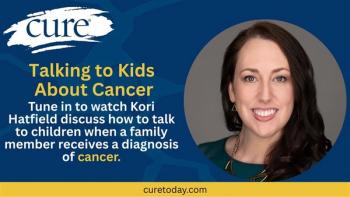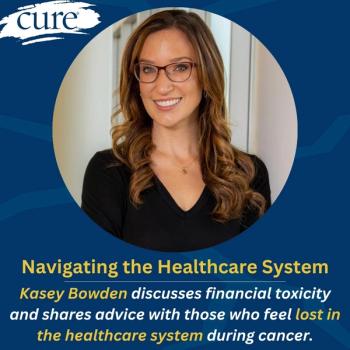
Cancer in the COVID-19 Era
Navigating cancer during the COVID-19 pandemic means facing extra concerns.
For many people affected by cancer, the COVID-19 pandemic has raised new concerns.
Patients, survivors and their caregivers may be living with extra stress due to worry about contracting the virus, a new level of isolation because of COVID-19 lockdown or quarantine, and questions about whether to continue pursuing screenings and treatments if that means visiting care centers in person.
Those who have cancer or are immunocompromised because of the disease or its treatments may face a higher risk of experiencing severe complications if they contract COVID- 19, so they will likely be instructed by their care teams to follow the guidelines routinely recommended for the general population: Wear a mask and stay at least 6 feet away from others when outside the home; avoid people who are not wearing masks, those who have symptoms of COVID-19 and those who have been exposed to someone with the virus or its symptoms; choose outdoor over indoor activities when possible; keep rooms well-ventilated if meeting indoors and keep interactions short; avoid crowds; engage in frequent, careful handwashing or the use of hand sanitizer; clean and disinfect surfaces often; and get the flu shot.
But that doesn’t necessarily mean that patients and survivors should stop having screenings or treatments in order to avoid contact with others.
At the beginning of the pandemic in the United States, many with cancer were given no choice but to delay their treatments because their medical teams were overburdened with patients who had COVID-19. In addition, some clinical trials were temporarily halted. By summer, that situation had largely been alleviated, but it could happen again as COVID-19 surges in various parts of the country.
An unfortunate result is that experts expect to observe a trend of cancers diagnosed at later stages and disease that progressed in the absence of timely treatment. That’s why medical professionals are recommending that patients and survivors speak with their care teams about whether they should continue to receive screenings and treatments as the pandemic continues.
One strategy making it easier for patients and survivors to continue receiving care in the COVID- 19 era is telehealth, which allows doctors’ appointments to occur online or by phone. Of course, these visits can’t take the place of in-person treatments, such as chemotherapy infusions, but in many cases, they are appropriate for follow-up discussions or meetings with mental health professionals.
At the outset of the pandemic, many insurance companies agreed to cover telehealth visits for several months but because the strategy was widely embraced and is still being heavily used, allowances for telemedicine have largely been extended.
Those who have lost their health insurance due to unemployment caused by the pandemic face a significant challenge, as cancer care is expensive. However, these individuals or families may be eligible for coverage through Medicaid. To learn more, check healthcare.gov/coronavirus or healthcare. gov/medicaid-chip/getting-medicaid-chip.
Isolation is another problem often associated with the cancer experience. Treatments can necessitate long recoveries at home or in the hospital, those who are immunocompromised may choose to limit their social interactions, and some patients and survivors simply feel alone when surrounded by others who haven’t experienced a cancer journey firsthand. Not surprisingly, staying home because of concerns about COVID-19 has deepened the feeling of isolation for many who have cancer.
Luckily, there are resources that can help. Most patient advocacy organizations have moved an array of resources online during the pandemic, meaning that free support groups, educational workshops, yoga and meditation classes and other activities are readily available. Reading the stories of others affected by both cancer and the pandemic can also help; for instance, the bloggers at curetoday.com/news/blogs often write about feeling saddened by the pandemic but also well prepared to face it because of their experiences with cancer.
Finally, those affected by cancer sometimes need to adjust their work activities to accommodate a changed level of energy or a treatment regimen. With COVID-19 adding potential risk to on-site work, discussions about requested accommodations may change for some patients, particularly those who can successfully perform their jobs from home. Visit the sections in this book titled “Balancing Cancer and Work” and “Knowledge is Power” to learn more.
To identify additional sources of support during this difficult time, don’t forget to look through CURE ®’s toolbox of resources at curetoday.com/journey.




